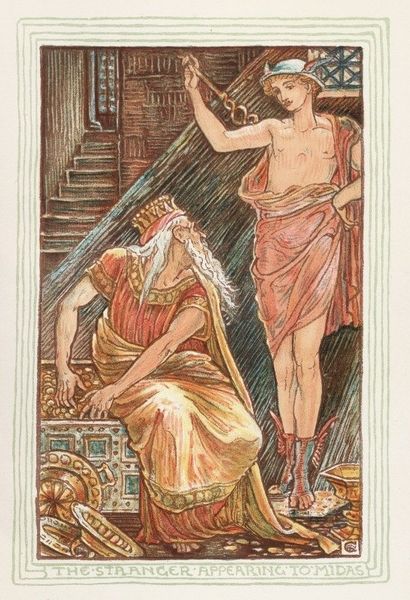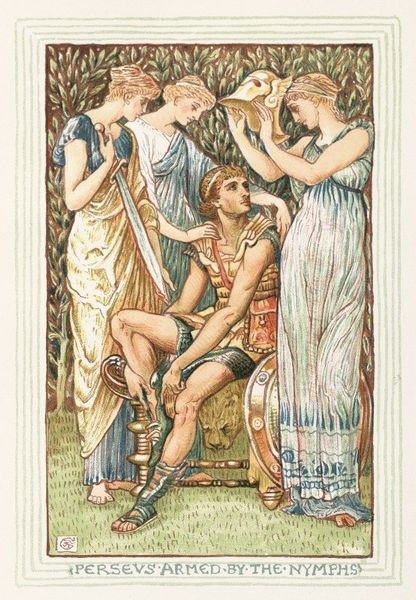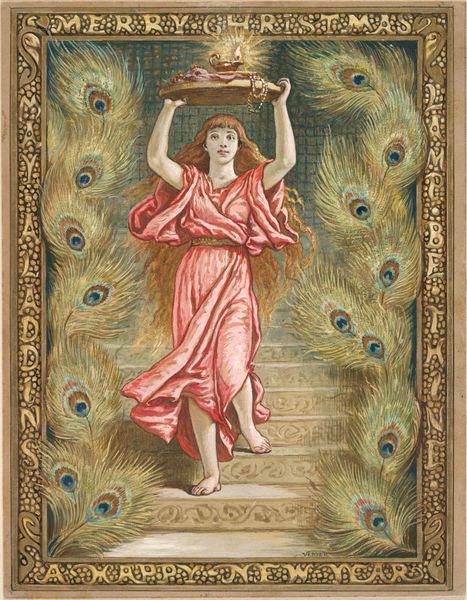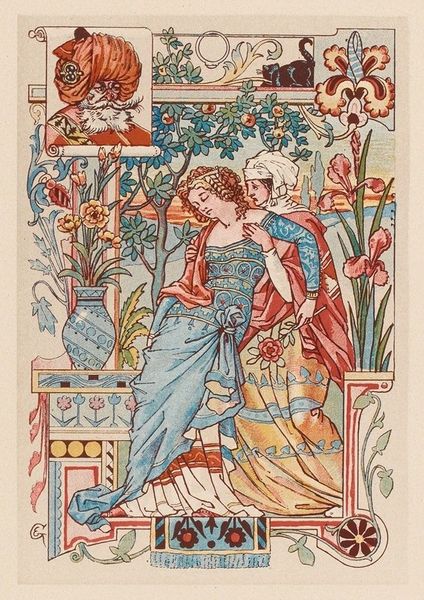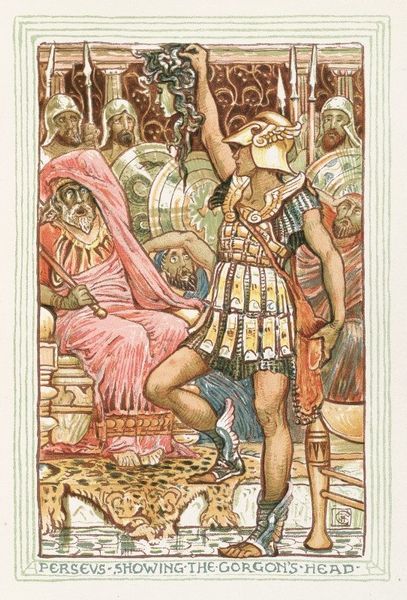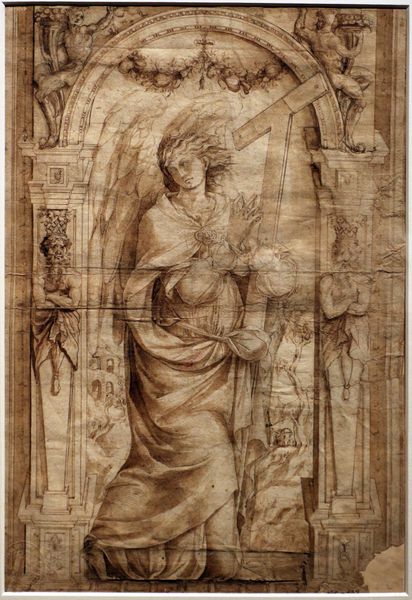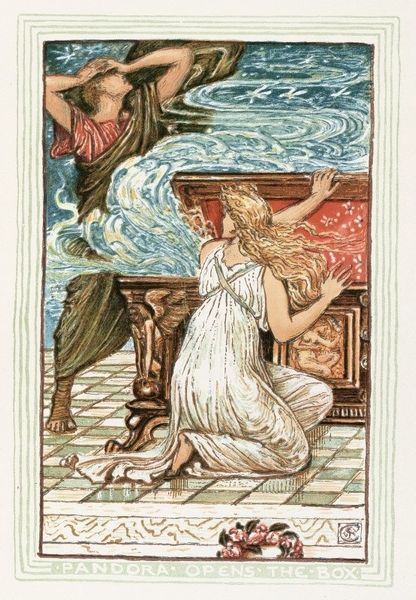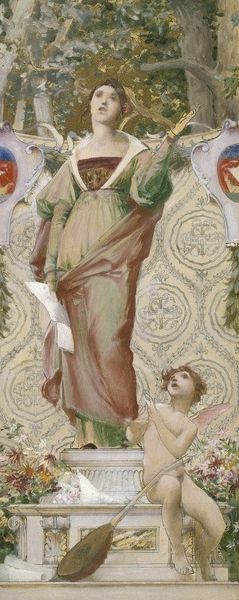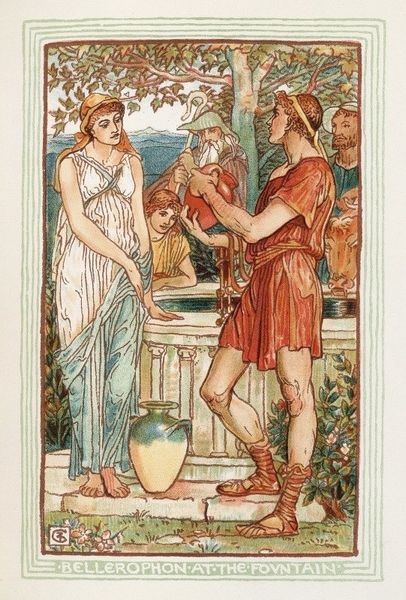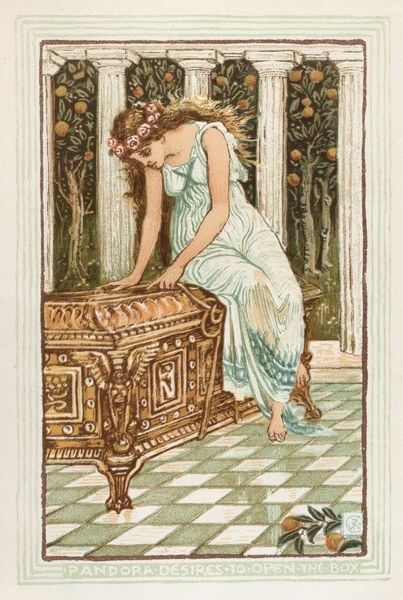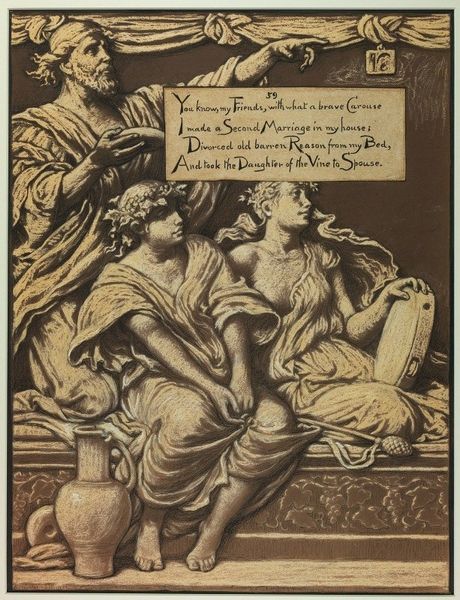
coloured-pencil, watercolor
#
art-nouveau
#
coloured-pencil
#
allegory
#
figuration
#
watercolor
#
coloured pencil
#
art nouveau
#
watercolour illustration
#
history-painting
Copyright: Public Domain: Artvee
Editor: This is Walter Crane's "Midas Daughter Turned to Gold," from 1893, created with colored pencil and watercolor. It's so richly detailed and ornate, yet there's such a strong sense of tragedy in the scene. How do you read the visual composition of this piece? Curator: Let us examine its formal qualities. Note how the artist employs a limited palette. The pervasive gold reinforces the central theme of the Midas touch. But consider, too, how the lines and patterns—seen in the tiled floor and the textile designs—create a sense of enclosure, emphasizing the daughter’s entrapment. The artist employs symmetry by visually balancing the male and female figures, but the static arrangement further adds to the feeling of finality, do you agree? Editor: Absolutely, the composition is strikingly still. There’s such intricate detailing around the borders, almost like the illustration in a children's storybook. So the geometric and symmetrical composition contribute to this still quality? Curator: Indeed. Crane's application of line dictates how light is used. This results in an interesting contradiction: the highly ornamental details give it a very decorative look, yet there is also an inescapable weightiness to the subject. Even Crane's rendering of space plays a role in interpreting the psychological experience. What about it did you find tragic, exactly? Editor: Well, to see the life draining out of her, and everything around them becoming lifeless in its perfection—the scene, though visually appealing, evokes a real feeling of loss. Curator: Precisely. The juxtaposition of beauty and stillness enhances the gravity of the narrative. Through its visual vocabulary, the image encapsulates the ultimate futility of greed. Editor: This formal analysis really helps me to better understand how the tragic themes are conveyed through Crane's artistic choices. Thank you! Curator: My pleasure. Analyzing the formal components offers valuable tools for interpreting the piece's overall message and aesthetics.
Comments
No comments
Be the first to comment and join the conversation on the ultimate creative platform.
